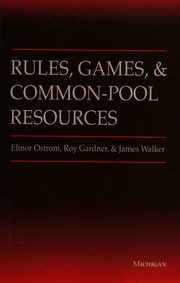
The Legend of Lin: A Tale of Community-Centric Enablement
Dear Fellow Traveler,
The heroines of the past will be revealed in legends of our written and shared accounts of their journey. When future generations of humans tell the story of how civilization moved beyond the Tragedy of the Commons, they will tell of the wisdom of Elinor “Lin” Ostrom. So let us now name into being “The Legend of Lin,” champion of the commons, defender of the public good, with deep insights in revealing the framework to sustain resilient communities and build new economies.
It was the fall of 1933, on the 7th day of August, when Lin took her first breath of coastal L.A. California air. A full 1/4 of the US workforce was unemployed. Gold was freshly exchanged with paper.
On the sharp edge of poverty and misogyny in a town called Beverly Hills, Lin grew in exposure and access to tools of knowledge through the continual pursuit of her education. As her life progresses, she collects the skills and the capabilities in domains formerly uncharted by the fairer of our kind. She challenges herself through debate, public policy, scientific questioning, and notably for the times she obtained a Ph.D in Economics.
As a field scholar, Lin conducted research and analysis of the water industry, studied resource & personnel management, and was eventually awarded a professorship at UCLA. These experiences laid the ground work for her interest in the commons, though she had not yet named it. With another 15 years of extensive academic research focused on police industry structure and performance, she was exposed to the organizations and decision making processes that impacted people on a daily basis.
Lin finally returned to study the commons with the clarity to begin uncovering an ancient domain of innate human organization. Lin had gained the experience and wisdom to begin to name this framework.
Her revealing point of focus centers on the mechanisms of how communities organize to manage commonly held resources, and how they govern the systems that sustain them. In her most formal vocabulary, Lin presents a method of evaluating how communities self-organize, and the framework that emerges in communities that are successful.
The Tragedy of the Commons is a mythos that suggests humanity is destined to bring about the collapse of ecological systems through mismanagement and over use of Earth’s resources. The Legend of Lin asks us to reevaluate this assumptive myth.
Elinor Ostrom and the Tragedy of the Commons, by David Bollier
In proposing an alternative solution to this commons dilemma (rather than depending on government action, privatization, or some other external means of control over the commons), Lin asserts a “cooperative strategy” for community management can be used, whereby participants “themselves will work out” a contract that allows for productive outcomes (Ostrom 1990).
Rules Games and Common Pool Resources, by Elinor Ostrom

Understanding Social Ecologic Systems, by Elinor Ostrom

In other words, Lin saw the critical need for an “analysts toolkit … whereby a group of principals can organize themselves voluntarily to retain the residuals of their own efforts” (Ostrom 1990). What resulted from her analysis over time was a framework to understand, characterize, and even catalyze the kind of cooperation necessary to allow communities to survive and thrive in their environment despite potential tragedies that have always seemed to abound.
In essence, this framework represents a form of social contract and governance which successful community systems have adopted at local scales over many generations, now put into a simple method that is adaptable, scalable, and repeatable.
Lin made it possible to demand localism when she demonstrated that “within communities, rules and institutions of non-market and not resulting from public planning can emerge from the bottom up to ensure a sustainable, shared management of resources, as well as one that is efficient from an economical point of view.” (Felice, 2012)
What was special about Lin was not that she was the first female economist to win a Nobel Prize in Economics, or for her “analysis of economic governance, especially the commons”, it was her ground level field research focused on real local communities, and her ability to break down barriers in the knowledge silos of western academia.

Lin shows profound wisdom in recognizing that the “power of a theory is exactly proportional to the diversity of situations it explains” (Ostrom 1990). The Legend of Lin reminds us of a more abundant reality in which individuals voluntarily establish self-organized, self-governed communities capable of enabling successful cooperation that sustains the environments, resources, and people together in lasting relationships.
————
8 Design Principles for Managing a Commons
Note: the following framework has been highly abbreviated and restated for simplicity and brevity. Please refer to her original work, Governing the Commons: The Evolution of Institutions for Collective Action.
1. Boundaries: the group and resources being managed have clearly defined users and boundaries.
– DEFINE BOUNDARIES: There are clearly defined boundaries of a system / resources from the larger environment.
– DEFINE LEGITIMATE USERS / BOUNDARIES: There is a clearly defined community of legitimate users or members
2. Proportional Equivalence Between Benefits and Costs: ensure to match rules governing the use of common resources to the local needs and environmental conditions.
– SHARE KNOWLEDGE: All parties share knowledge of local conditions of the system
– ADAPT LOCALLY: Rules are adapted to the local needs and conditions of the community, resources, and environment
3. DECIDE INCLUSIVELY: Collective choice arrangements ensure that those affected by the rules can participate in decision making in modifying the rules.
4. Graduated Sanctioning:
– HOLD USERS ACCOUNTABLE: Use graduated sanctions for rule violators and free riders, avoid excessive or disproportional sanctions.
5. MONITOR EFFECTIVELY: Develop a system, carried out by community members, for monitoring the common resources. Ensure monitors of the rules and resources are accurate and accountable.
6. Conflict Resolution Mechanisms:
– OFFER MEDIATION: Provide accessible, easy, and low-cost means for conflict resolution before a situation escalates.
7. Recognition of Rights to Organize:
– GOVERN LOCALLY: Ensure the rule-making rights of community members are respected by outside authorities or hierarchies. Ensure community self-determination is recognized by outside authorities.
– Consider how local, county, state, national, international jurisdictions impact your community
8. Poly-centric Governance:
– DON’T EXTERNALIZE COSTS: Build responsibility for governing the common resource in nested tiers from the lowest level up to the entire interconnected system.
How Can Peer-to-Peer and Distributed Systems Enable Elinor Ostrom’s 8 Principles?
Peer-to-Peer and Distributed Systems paired with redundant lines of communications, & advancements in 3D interfaces enables vital community functions of communications, data storage / archiving, authenticity, participant privacy, visualization of data and environments, & and realtime decision making capabilities needed for scaling collaborative efforts. With these tools in place, we have the technological components to instantiate Ostrom’s principles as functional governance and economic mechanisms for community-centric organizations. The key to success is an integrated multi-discipline approach that requires many component layers (from hardware and software infrastructure to accessible user interfaces) to be implemented under a community oriented framework formed on time-tested economic governance principles.

Sources:
Ostrom, Elinor. Governing the commons: the evolution of institutions for collective action. Cambridge: Cambridge University Press, 1990.
https://www.nobelprize.org/prizes/economic-sciences/2009/ostrom/biographical/
Ostrom and the Solution to the Tragedy of the Commons
Resilience.org: Governing the Commons Review
ProSocial Teaming: Elinor Ostrom & ‘The Commons’
How can Blockchain enable Elinor Ostrom’s 8 commons principles?, P2P Foundation
Looking east from Canon Drive toward the Beverly Hills City Hall, Beverly Hills, 1933
PLAN Systems
Learn more about this effort by visiting our website: https://plan-systems.org
Provide a referral or sponsor a project: https://www.plan-systems.org/proposals/
Become a sustaining contributor with a tax deductible donation: https://plan-systems.org/charitable-purpose-faq/#donate
Connect for a demonstration of PLAN 3D (alpha): info@plan-systems.org
You can also check out some of the previous articles we have published about future technology systems:
- Beyond Mere Decentralization:
https://plan-systems.org/2020/04/03/beyond-mere-decentralization/ - State of Urgency for Distributed Systems:
https://plan-systems.org/2021/02/18/state-of-urgency-for-distributed-systems/


